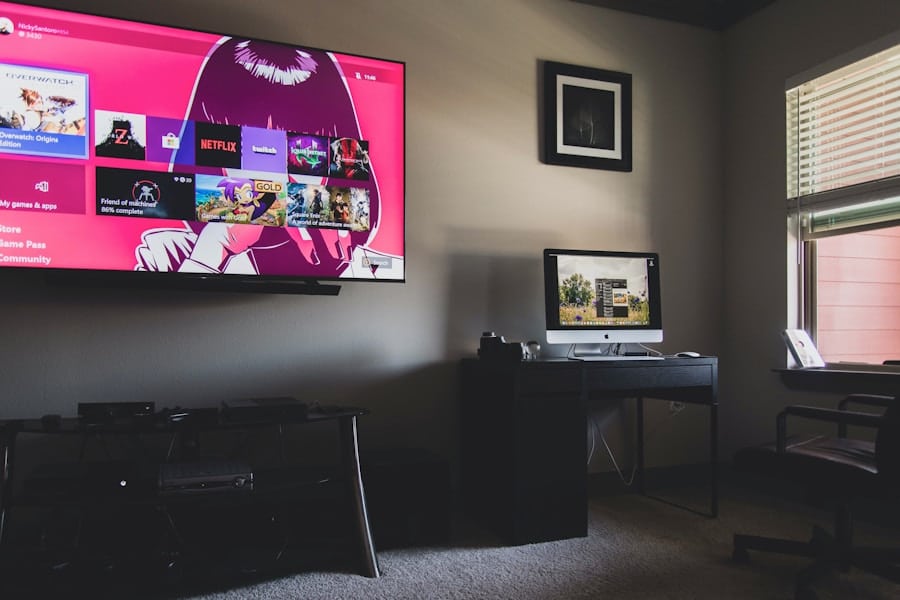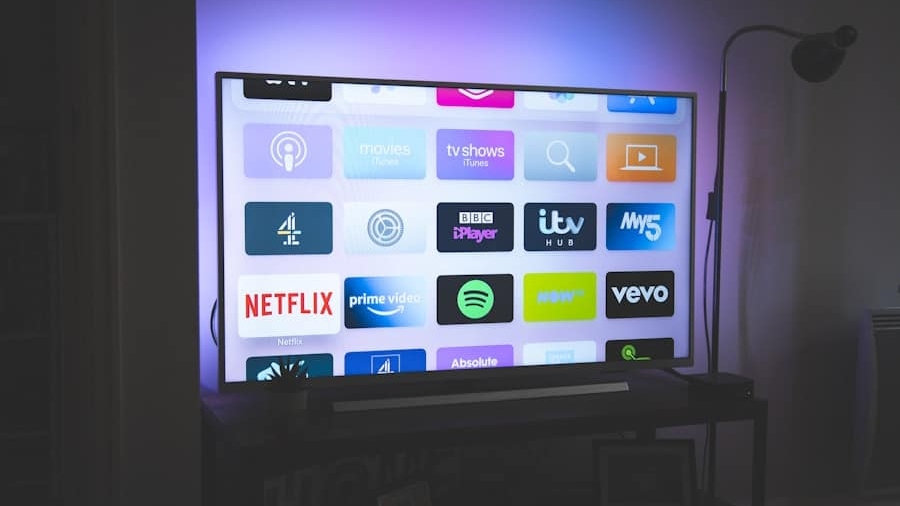The evolution of gaming has transcended traditional consoles and PCs, leading to a burgeoning interest in smart TVs as viable platforms for immersive gaming experiences. Smart TVs have become more than just devices for streaming content; they now offer features that cater specifically to gamers. With advancements in display technology, processing power, and connectivity options, smart TVs are increasingly being recognized as essential components of a modern gaming setup.
The integration of gaming-specific features, such as low input lag and high refresh rates, has made these televisions appealing to both casual and hardcore gamers alike. As the gaming landscape continues to evolve, the demand for high-quality visuals and responsive gameplay has never been greater. Smart TVs are stepping up to meet these demands, providing gamers with larger screens and enhanced graphics capabilities.
The convergence of gaming and television technology has led to a new era where gamers can enjoy their favorite titles on expansive displays that deliver stunning visuals and immersive soundscapes. This article delves into the various aspects of smart TVs that make them suitable for gaming, exploring everything from display quality to connectivity options.
Key Takeaways
- Smart TVs offer a convenient and integrated gaming experience with built-in features and technology.
- Display and resolution comparison is important for gaming, with 4K resolution and HDR support being key factors for an immersive gaming experience.
- Input lag and response time are crucial for gaming, with lower input lag and faster response time providing a smoother and more responsive gaming experience.
- Gaming features and technology such as variable refresh rate, auto low latency mode, and gaming mode enhance the gaming experience on smart TVs.
- Audio quality and surround sound support contribute to a more immersive gaming experience, with Dolby Atmos and DTS:X being desirable features.
- Connectivity and compatibility with gaming consoles are important considerations, with HDMI 2.1 and gaming-specific features enhancing the gaming experience.
- Smart TV operating systems and gaming apps provide access to a variety of gaming content and services, enhancing the overall gaming experience.
- Price and value comparison is important when choosing a smart TV for gaming, with consideration for the features and technology offered in relation to the price.
Display and Resolution Comparison
When it comes to gaming, the display quality is paramount. Smart TVs are available in various resolutions, with 4K Ultra HD (UHD) being the most prevalent in the current market. The higher pixel density of 4K TVs allows for sharper images and more detailed textures, which can significantly enhance the gaming experience.
For instance, games designed with high-resolution graphics, such as “The Last of Us Part II” or “Cyberpunk 2077,” benefit immensely from the clarity that 4K displays provide. The vibrant colors and intricate details become more pronounced, allowing players to immerse themselves fully in the game world. In addition to resolution, display technology plays a crucial role in how games are rendered on screen.
OLED (Organic Light Emitting Diode) technology has gained popularity among gamers due to its ability to produce deep blacks and vibrant colors. Unlike traditional LED displays, which rely on backlighting, OLED panels emit light on a pixel-by-pixel basis. This results in superior contrast ratios and faster response times, making them ideal for fast-paced gaming scenarios.
For example, in competitive games like “Call of Duty” or “Fortnite,” where split-second decisions can determine victory or defeat, the enhanced visual performance of OLED displays can provide a significant advantage.
Input Lag and Response Time

Input lag is a critical factor that can make or break a gaming experience. It refers to the delay between a player’s action—such as pressing a button on a controller—and the corresponding action displayed on the screen. For competitive gamers, even a few milliseconds of input lag can be detrimental.
Smart TVs designed for gaming often feature dedicated game modes that minimize input lag by bypassing certain image processing features that can introduce delays. Many high-end models boast input lag times as low as 10 milliseconds, which is considered excellent for gaming. Response time is another essential aspect that affects gameplay.
It measures how quickly a pixel can change from one color to another, impacting motion blur and ghosting effects during fast-paced action sequences. A lower response time results in clearer images during rapid movements, which is particularly important in genres like first-person shooters or racing games. Many smart TVs now advertise their response times prominently, with some models achieving response times of 1 millisecond or less.
This level of performance ensures that gamers can enjoy smooth visuals without distracting artifacts that could hinder their performance.
Gaming Features and Technology
Modern smart TVs come equipped with a plethora of gaming features designed to enhance the overall experience.
Additionally, many smart TVs support HDMI 2.1, which allows for higher bandwidth and enables features like 4K at 120Hz and Auto Low Latency Mode (ALLM).
These advancements ensure that gamers can take full advantage of the capabilities offered by next-generation consoles like the PlayStation 5 and Xbox Series
Another noteworthy feature is HDR (High Dynamic Range), which enhances the contrast and color range of images displayed on the screen.
Titles such as “Ghost of Tsushima” and “Assassin’s Creed Valhalla” showcase HDR’s capabilities beautifully, providing players with an enriched visual experience that draws them deeper into the game world.
Many smart TVs now support multiple HDR formats, including HDR10, Dolby Vision, and HLG, ensuring compatibility with a wide range of games and media.
Audio Quality and Surround Sound

While visual fidelity is crucial for an immersive gaming experience, audio quality should not be overlooked. Smart TVs often come equipped with advanced audio technologies that enhance sound quality and create an enveloping audio environment. Features such as Dolby Atmos provide three-dimensional soundscapes that allow players to hear sounds coming from all directions, adding depth to gameplay.
This is particularly beneficial in games where audio cues are vital for situational awareness, such as stealth games or multiplayer shooters. Moreover, many smart TVs offer built-in soundbars or advanced speaker systems that deliver richer audio experiences compared to standard TV speakers. For instance, models equipped with Acoustic Surface Audio technology use the screen itself as a speaker, creating a more immersive sound experience by aligning audio with on-screen action.
This level of audio fidelity can significantly enhance gameplay by making sounds more realistic and engaging, allowing players to fully appreciate the intricate sound design that modern games offer.
Connectivity and Compatibility with Gaming Consoles
Connectivity options are essential for gamers who want to maximize their gaming experience on smart TVs. Most modern smart TVs come equipped with multiple HDMI ports, allowing users to connect various devices such as gaming consoles, streaming devices, and sound systems simultaneously. HDMI 2.1 ports are particularly valuable for gamers as they support higher resolutions and refresh rates while also enabling features like VRR and ALLM.
In addition to HDMI connectivity, many smart TVs also offer wireless options such as Wi-Fi and Bluetooth. This allows gamers to connect their controllers or headsets without the hassle of cables cluttering their gaming setup. Furthermore, some smart TVs support screen mirroring or casting features that enable users to play mobile games on a larger screen seamlessly.
This versatility ensures that gamers can enjoy their favorite titles across multiple platforms without compromising on quality or performance.
Smart TV Operating Systems and Gaming Apps
The operating system of a smart TV plays a significant role in determining its usability and access to gaming content. Popular operating systems like Android TV, Tizen (Samsung), webOS (LG), and Roku offer various apps that cater to gamers’ needs. These platforms provide access to popular gaming services such as Google Stadia, NVIDIA GeForce NOW, and Xbox Cloud Gaming (formerly known as Project xCloud), allowing users to stream games directly to their TV without needing a console.
Moreover, many smart TVs come pre-installed with dedicated gaming apps that provide access to exclusive content or features tailored for gamers. For instance, some models may include game streaming services or even built-in emulators for classic games. The ability to download additional apps from app stores further enhances the versatility of smart TVs as gaming platforms, enabling users to customize their experience according to their preferences.
Price and Value Comparison
When considering a smart TV for gaming, price is often a significant factor influencing purchasing decisions. The market offers a wide range of options at various price points, from budget-friendly models to high-end flagship televisions equipped with cutting-edge technology. While it may be tempting to opt for the cheapest option available, it is essential to consider the value offered by each model in terms of features and performance.
High-end models may come with a steeper price tag but often justify this cost through superior display quality, lower input lag, advanced audio technologies, and enhanced connectivity options. For instance, investing in an OLED TV may be worthwhile for serious gamers who prioritize visual fidelity and responsiveness over other factors. Conversely, budget models may still provide satisfactory performance for casual gamers who primarily play less demanding titles or use their TV for streaming content.
Ultimately, finding the right balance between price and value requires careful consideration of individual gaming needs and preferences. By evaluating factors such as display quality, input lag, audio performance, connectivity options, and available features, gamers can make informed decisions that align with their budget while ensuring an enjoyable gaming experience on their smart TV.
If you are interested in gaming and technology, you may also want to check out this article on the

